
Venture capitalists, startup owners, authors, and other experts agree on what’s essential in an investor deck. They are the following:
- The Problem
- The Solution
- The Product
- The Market Size
- The Business Model
- The Unique Value Proposition
- The Competition
- The Traction
- The Marketing Plan
- The Team
If you’re still unsure, read on as we explain how to create investor pitch decks that cannot be ignored.
As for your investor deck designs, subscribe to Penji. Let our team of professional designers create stunning and attention-grabbing slides so you can focus on your pitch.
Include all parts of a pitch deck
As mentioned above, an investor deck has parts you need to include to make it effective. Below is a detailed list of these parts, make sure you include them:
- Company Overview
- Mission/Vision
- Problem
- Solution
- Product
- Market Opportunity
- Target Customers
- Business Model
- Technology
- Competition
- Marketing Plan
- Financials
- Team
- Traction
- Ask/Funding
1. Company Overview
Write a brief or bulleted list of what your company is about. Jot down what you offer, the problems you’re solving, when the business was founded, where it’s based, and more.

Example: WeWork
2. Mision/Vision
Your mission should be what you aim to do to disrupt the industry with your products or services. Your company vision, on the other hand, should be what your goal is for your company.
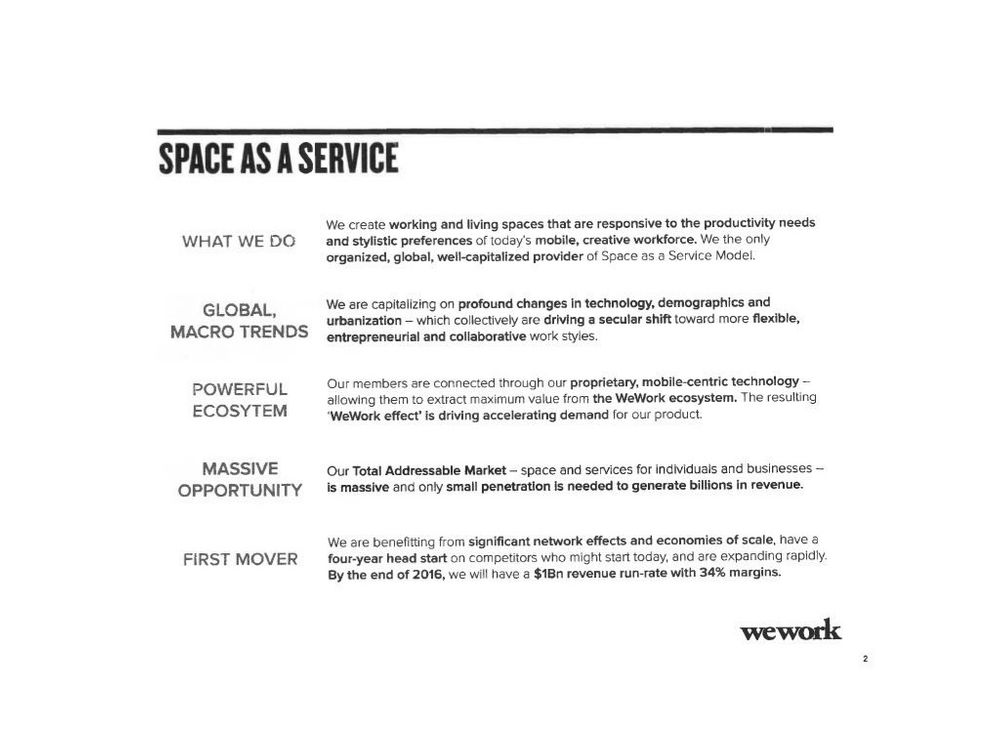
Example: WeWork
3. Problem
This is where it gets interesting as investors would want to know why you’re making the proposal in the first place. So let them know the current problem, gravity, and why solving the problem is essential.
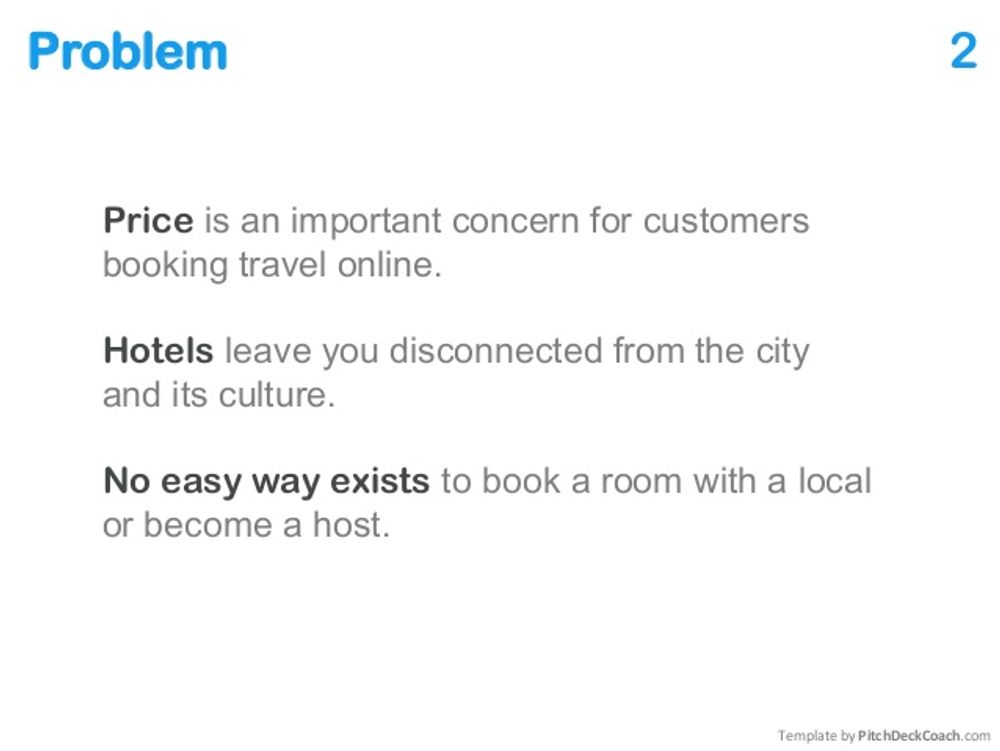
Example: Airbnb
4. Solution
At this point, the attendees would want to know what your proposed solutions are. Write down how your product or service can resolve the problem stated above.

Example: Airbnb
5. Product
Mention the product features and benefits, the product’s upper hand over competitors, how far the product has reached, what customers say about the product, and future expansion and iterations.
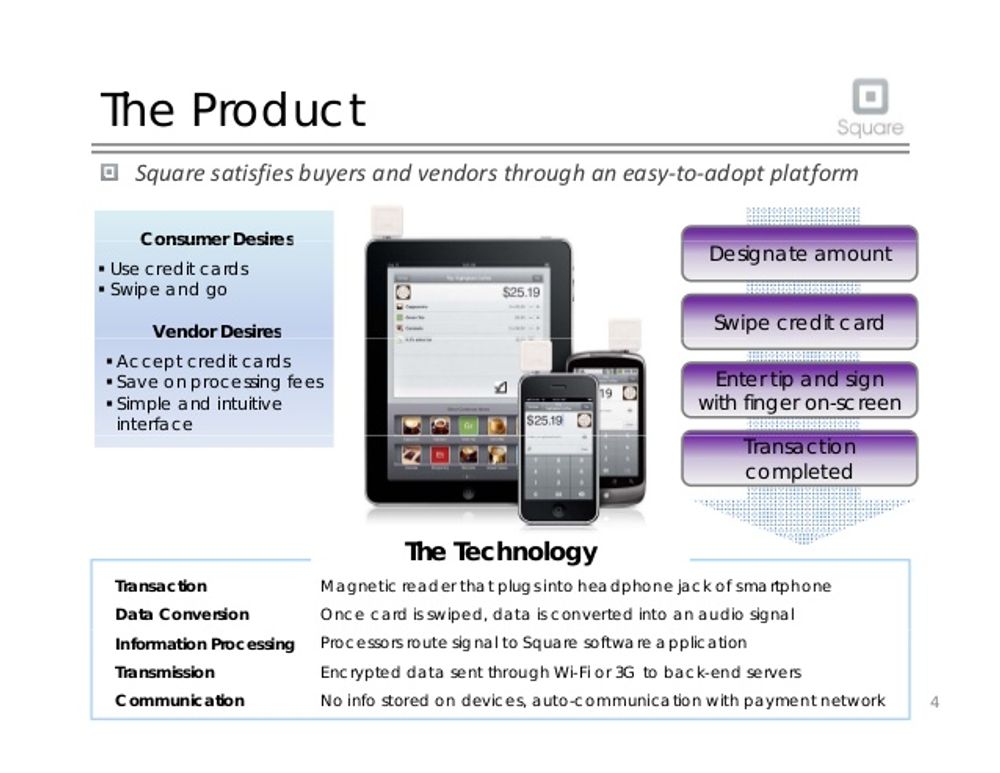
Example: Square
6. Market Opportunity
Show that there’s a need for your product in the market. Display graphs of the market share, and how your brand is going to dominate a huge part of it.

Example: Ooomf/Crew
7. Target Customers
If your product has gained some regular patrons, show this off by including your customers’ logos. Better yet, tell investors who your products are precisely for.
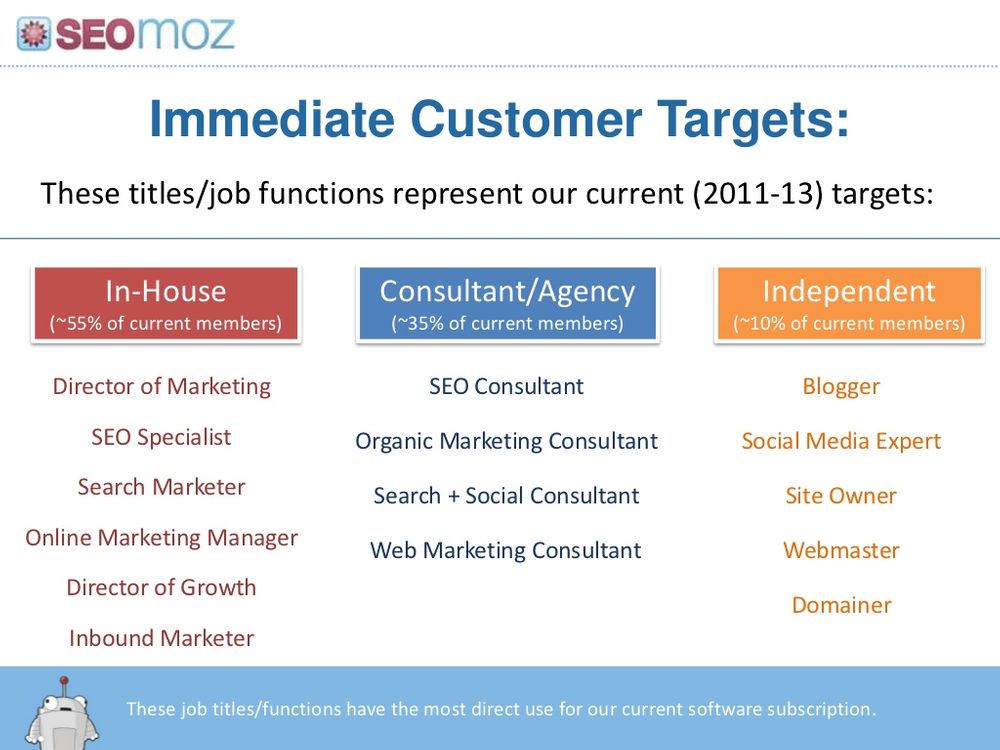
Example: SEOMoz
8. Business Model
The business model part of your investor deck should contain how you structured your business. For example, include your pricing model, customer acquisition channels, and more.

Example: BuzzFeed
9. Technology
Since consumers do everything with the help of technology, investors would be interested in how you’ve shaped yours. Include what types of custom tech tools you use and how this can trump the competition.

Example: Uber
10. Competition
Show investors that the competitive landscape is promising. However, the primary goal in this slide is to persuade investors that your company is better than the competition. Mention who your competitors are, what their strengths are, and what your competitive advantage is.
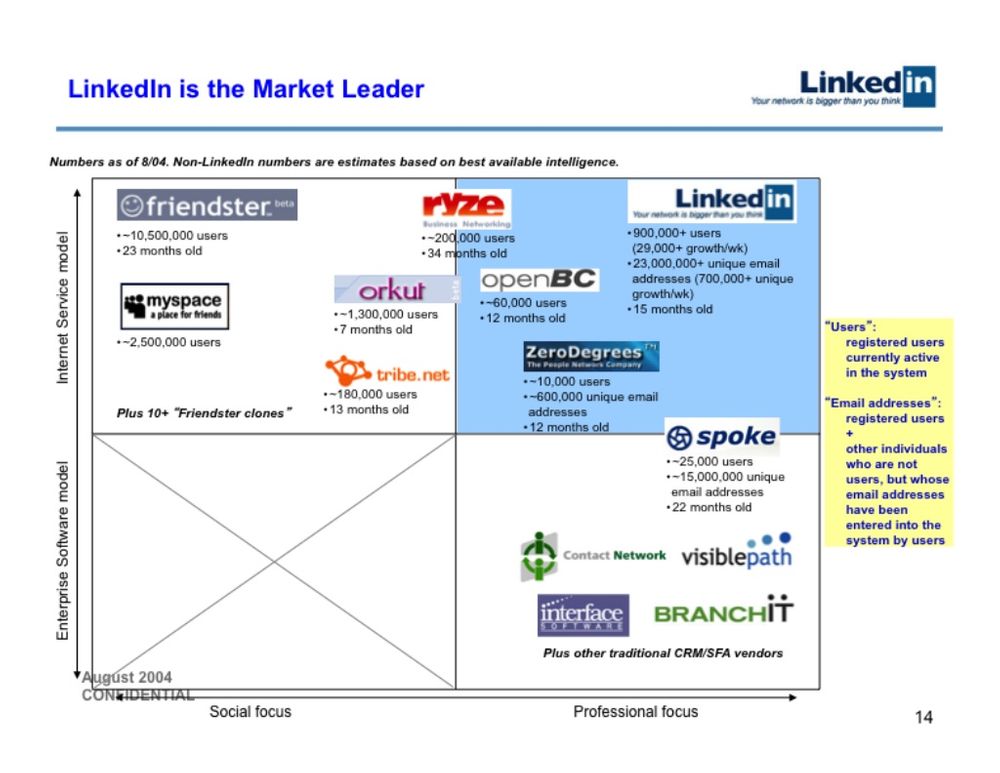
Example: Linkedin
11. Marketing Plan
For your business to flourish, you have to have a robust marketing strategy. Write down the marketing channels you’ll use, former and current campaigns, advertising metrics, and how you’ve created a buzz online and offline.
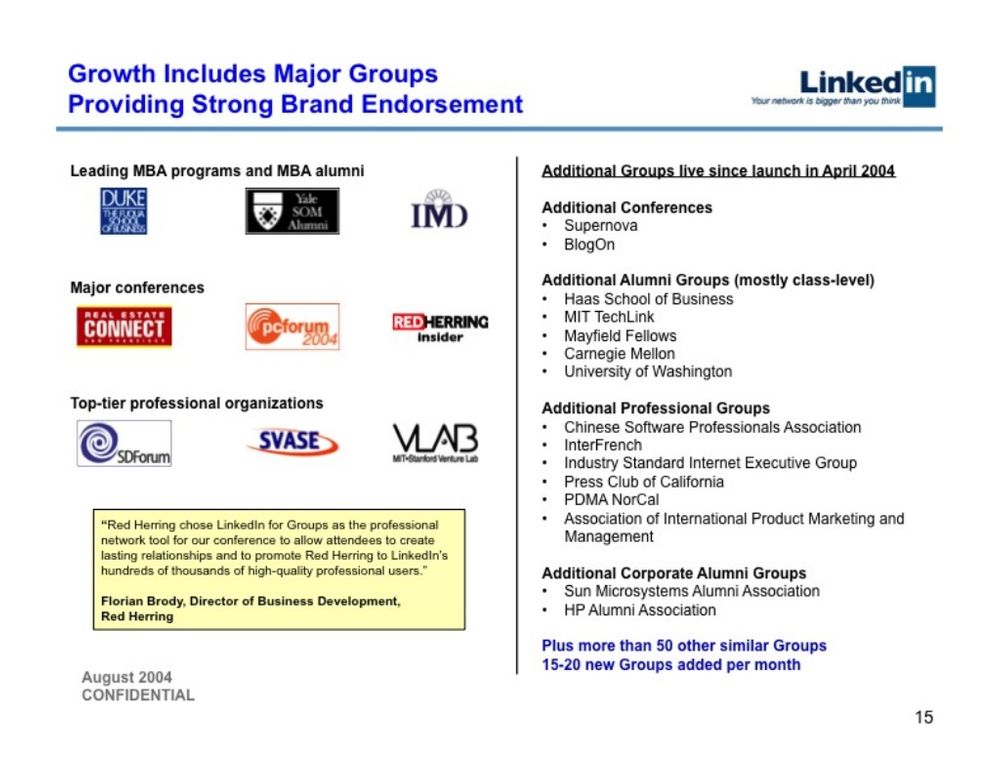
Example: Linkedin
12. Financials
This slide should contain your current financial status and how much cash you’re losing monthly or yearly, which is called the “burn rate.” It should also contain financial projections for three to five years, revenue, expenses, and more.
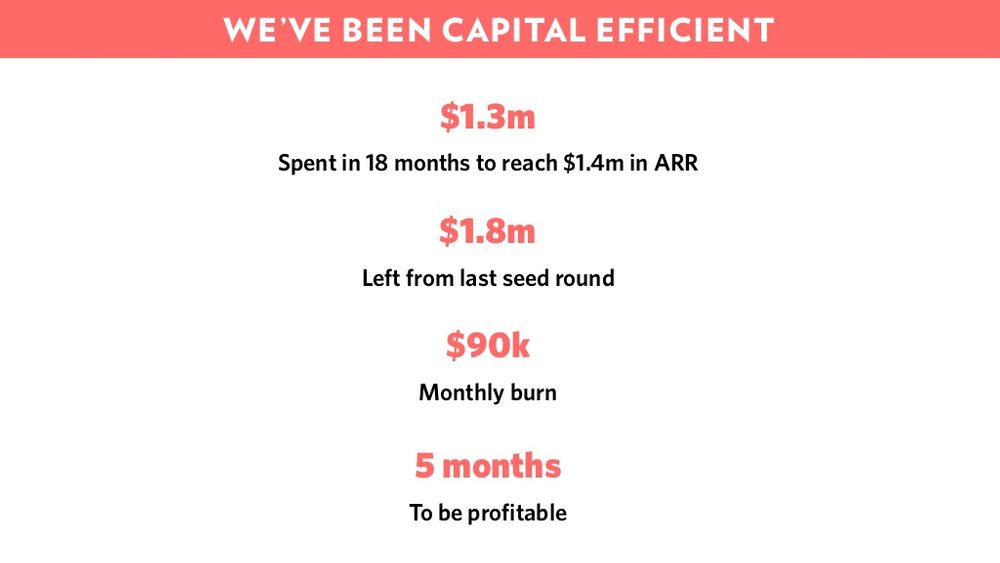
Example: Front
13. Team
This slide can boost your company’s credibility, especially if you display board members, consultants, or advisors. Also, include photos, designation, and expertise of your key staff members.

Example: Biogrify
14. Traction
The traction slide in your investor deck is a persuasive element. It can be in one slide or displayed across the entire presentation. This will contain your achievements such as sales, website traffic, email sign-ups, app downloads, partnerships, press publicity, social proof, and more.
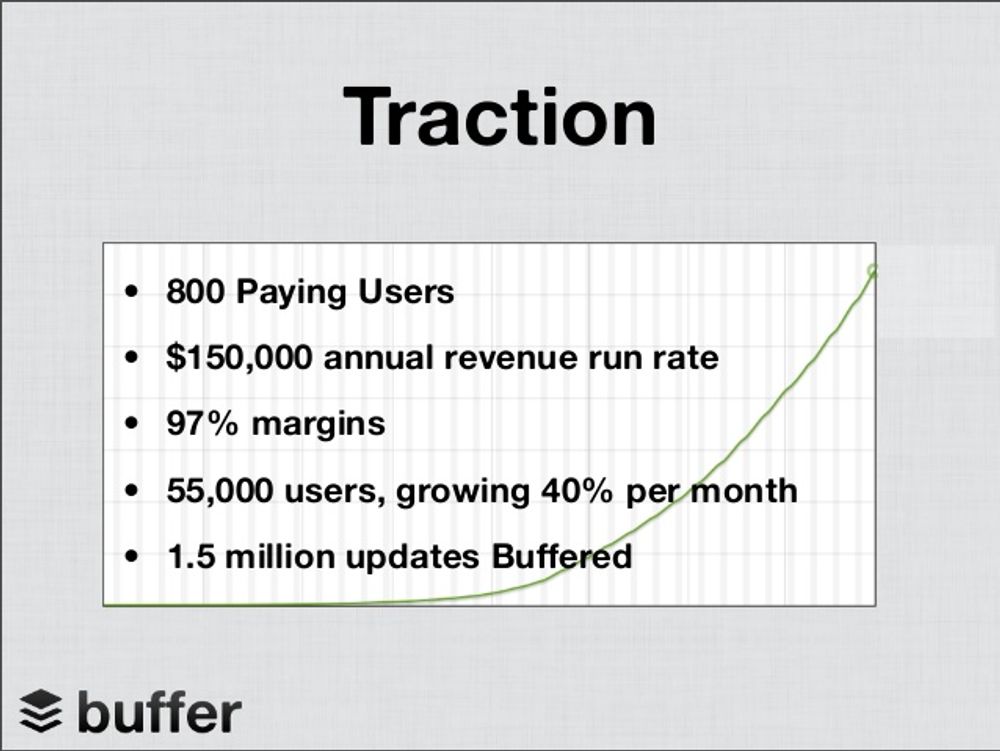
Example: Buffer
15. Ask/Funding
This is one of the most crucial parts of your investor deck. When asking for funding, make sure to give an estimated amount or range in financing. Then, include the timeline of how long it should cover your operations. You can also break down how you’re going to use the funds and include famous investors if any.
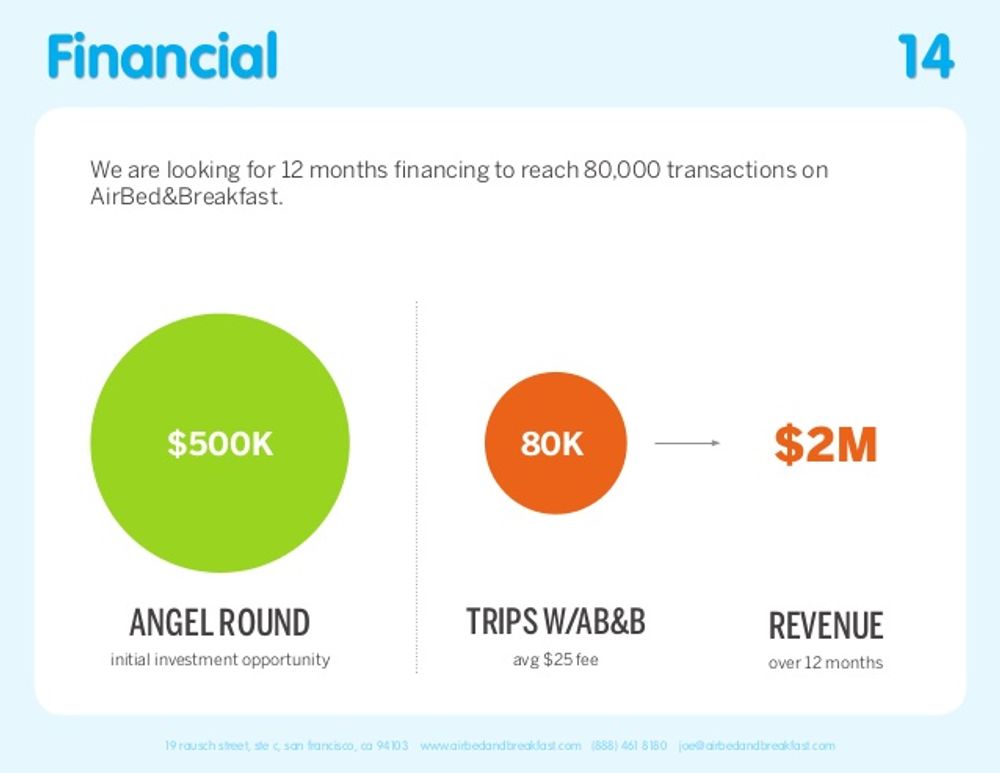
Example: Airbnb
A few quick notes:
Be concise
After you go through the investor deck parts checklist, delivery should be your next focus. The first three things you need to remember are: be brief, be straightforward, and be honest.
Be brief by not dwelling on one slide for too long. On the other hand, don’t go off-track and keep your explanations short.
Be straightforward by getting right at it. Prevent beating around the bush and focus on the problem at hand.
Finally, be honest and show graphs, statistics, proof, and real figures about your business and the financial assumptions.
Start with an overview
Start with a quick one-minute summary of what the proposal is all about. Also, starting with an executive summary that informs attendees what they will hear in the next hour or so. Plus, this helps remind them what the central concept is as the presentation goes deeper into subtopics.
Focus on the outcome
Remember, your investor deck is what will get you a second meeting or, in some cases, funding. You want to show investors the outcome of your plan is worth investing in. Although the process is also essential in persuading attendees, always dwell on the results because investors think about “what’s in it for them” when funding a business idea.
Show what innovative methods are in place to achieve the outcome you want from your products or services.
Don’t crumble under pressure
You might think your idea is the first concept out there. More often than not, there’s probably already one company offering similar services. People can think of a million ideas and end up not pulling through with it.
Stand behind your idea until the end of the presentation, and be ready to answer all questions with confidence. Most business ideas never materialize because people don’t like scrutiny. Instead of getting defensive, be open to your investors’ insights and answer their questions as honestly as you could. To prove that your idea is feasible, don’t crumble under pressure.
Corroborate via storytelling and data
Investors are all about the figures. However, you shouldn’t babble on and on with statistics, financials, data, and numbers. This will either bore your audience or make your presentation dull. Instead, leverage both storytelling and data when presenting your investor deck.
Present data, then follow it up with an interesting narrative explaining how the figures prove business operations, concepts, and methods. It’s also a great idea to incorporate your own story into your pitch. Why are the problem and solution important to you? Having a personal connection to the product will tell your investors that you’ll stick around even when things get tough.
Connect with your audience emotionally
Investors support a business when the brand’s values are in line with theirs. That said, use graphic design to add brand value. Plus, pack an emotional punch when asking for funding support. Try to do due diligence and determine what each investor is into, their advocacies, charities they support, and whatnot.
Use that knowledge as an advantage to connect with your audience emotionally. Another way of evoking emotion when presenting a business proposal is by showing your passion. Passion is contagious and convincing, and investors will see your determination in making your business idea happen.
Read, elaborate, minimize
It can get too overwhelming when you’re all-out presenting your investor deck. But remember these three factors when you’re deep into your presentation: Read, Elaborate, Minimize.
Read from your slides a bit, but make sure not to read all throughout. Elaborate as you read the information. Finally, make sure to minimize your explanations to keep them brief.
Bring the A-team
There’s nothing that can boost your confidence in public speaking other than having your team behind your back. So try to get the A-team involved in the presentation. However, remember to let them speak if necessary, as this might give the impression that they’re incompetent.
Let them explain some parts that they’re knowledgeable about. Having the best talent around not only boosts your morale. But also tells investors that this is a feasible project because the most skillful people are behind it.
Practice, practice, practice
Practice your investor pitch deck presentation before the big day. Do this with your team, friends, or family. Do a couple of simulations that can bolster your confidence during the presentation day. Let your listeners come up with a set of possible questions and try to answer them as smoothly as you can.
Make it visual
Some investor decks rely on text alone. However, the best and most compelling investor pitch decks are those that balance text and graphics. Apply the graphic design concept and principles when creating beautiful pitch decks. Use custom, quality images to make your slides stand out.
Subscribe to Penji for Investor Deck Visuals
Create the copy for your investor deck and leave the design to the experts. Penji’s graphic designers create professional designs that will make your investors say YES.
Combine excellent copy, captivating graphics, and flawless delivery, and you’re well on your way to a successful business venture.
Subscribe to Penji now and try the service for 15 days risk-free.









